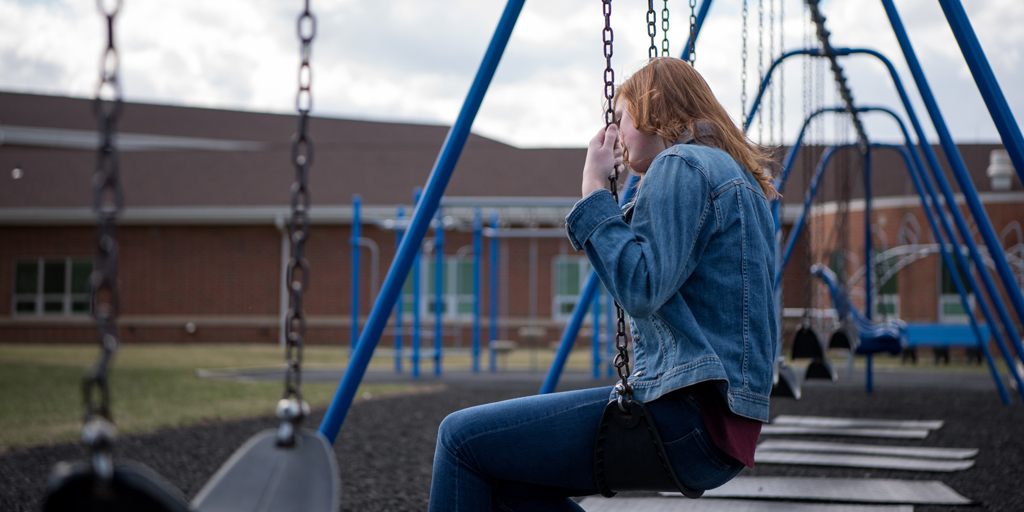Suicides Among Youth Show Alarming Increase

Find Your Perfect Match
Answer a few questions and we'll provide you with a list of primary care providers that best fit your needs.
Suicide is now the second leading cause of death among young people between the ages of 15 and 34 in the United States.
With the deaths by suicide last week of celebrities Kate Spade and Anthony Bourdain it’s more important than ever to talk to our children about the permanence of suicide and how they can get help if they ever feel their life is not worth living.
To understand what’s happening to our youth, Premier Health Now talked with Marnie Masten, MS, LPCC, LSW, program director at Samaritan Behavioral Health CrisisCare.
“A big factor for youth is trauma, and part of that is bullying,” Masten says. “And we are seeing more and more of the impact bullying has on kids, whether it is physical or on social media.”
Any form of bullying undermines the sense of self-esteem and self-concept for children, teens and young adults, and it impacts their social network.
“It does a lot of damage psychologically to youth and young adults,” Masten says. After a 15 percent decline in the suicide rate among 15- to 19-year-olds between 1999 and 2007, the rate jumped 56 percent for this age group in 2016, says the Centers for Disease Control and Prevention. Unintentional injuries are the first cause of death among teens and young adults, and homicides are the third, say studies from the CDC and the Journal of the American Medical Association.
While youth may think about taking their own lives — especially if suicide is glamorized in the media — they often do not fully understand the impact it will have on everyone who knows them.
Suicide is now a major public health issue, says the CDC. The suicide rate among all U.S. adults increased more than 25 percent in the last 20 years. And 25 states saw their rates jump by more than 30 percent.
Ohio’s suicide rate increased 37.6 percent between 1999 and 2016, ranking the state 12th in the nation.
There are many factors tied to the increased suicide rate. Researchers cite the impacts of social media, bullying, lack of access to mental health services, increased economic disparity and easier access to guns. The three leading methods of suicide during the study period were suffocation, firearms and poisoning, says the CDC, with firearms accounting for 43 percent.
The decision to take one’s own life is often impulsive, Masten said. A child, teen or young adult may experience a major depressive episode during which they have no hope about their future. These episodes typically last two weeks. A loved one may not sleep or sleep too much, may stop eating and may not participate in regular activities. Sometimes people start using alcohol and drugs to cope.
"They don't see that things will change,” Masten says. “They can’t see that it won’t always be that way.”
It is at this point that some may decide to take their own life. If they’ve already thought about it, this is when they get the courage to take action, Masten said.
Most suicides are preventable with access to mental health services, counseling and the “protective factors” that come with having a supportive network of friends, family and community, Masten says.
Children and young adults who say things like, “Life is too hard,” or “I am such a failure” should be encouraged to talk to a trusted adult, such as a parent, a coach or even a doctor. Recent studies show that even virtual visits with a therapist or doctor can be helpful, especially for men who are less likely to open up about their feelings.
Family, friends and counselors can provide messages of hope.
“We talk with people about things they can plan and look forward to,” Masten says. “They need to understand that just because you feel this way now does not mean you will feel this way the rest of your life.”
How to get help:
- Call Samaritan Behavioral Health CrisisCare at (937) 224-4646
- Call the National Suicide Prevention Lifeline at 1-800-273-8255, 1-800-273-TALK or TEXT to 741741.
Find Your Perfect Match
Answer a few questions and we'll provide you with a list of primary care providers that best fit your needs.
Source: Marnie Masten, MS, LPCC, LSW, Samaritan Behavioral Health; Centers for Disease Control and Prevention; Journal of the American Medical Association; CNN; NPR; New York Times; CNBC





